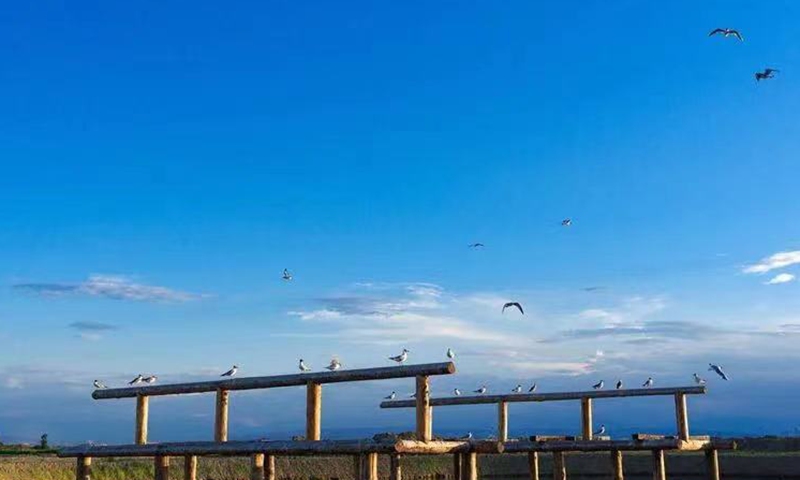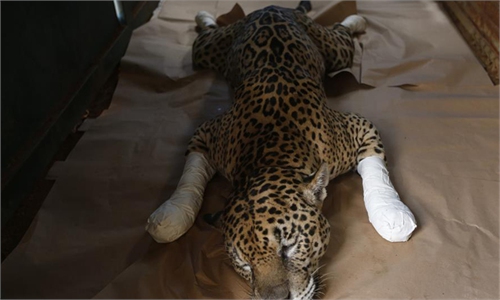Migration of wild birds in the national wetlands park in Xinjiang attracts tourists and improves environment

Photo: Courtesy of Manas Wetlands Park
Myriads of birds fly through the sky in flocks singing and some of them land on trees or reeds growing at the center of the wetlands. Just for a while, the branches of the trees are decorated with black birds grooming their feathers.
This common scene appears almost every day when the season of bird migration comes to the National Wetlands Park, in Manas county of the Changji Hui Autonomous Prefecture in Northwest China's Xinjiang Uygur Autonomous Region.
The 89-square-kilometer national wetlands park, established in 2016, is one of the most important stations for migratory birds, like swans and graylags, which often fly to warmer places from September to November and choose the park as a place to replenish energy.
"Swans will arrive here around one month later," Liu Yongjun, leader of the guard and management team of the park, told the Global Times on Thursday. Swan is the most popular bird species among tourists at the park.
Liu said that, because of better ecological environment of the county and the establishment of the park, they have found more swans tagged by foreign research institutes landing there during the migration.
"Here, before the wetlands park was built, the place had been used for grazing and too many cows, as well as sheep, made the land too sandy," Liu pointed to a part of wetlands, where a large area of reeds was planted. "Now you can see it full of greenness."
The team guards the park 24 hours around the clock with a variety of methods, including patrolling with vehicles and supervision through unmanned aerial vehicles.
The team consists of members that belong to different ethnic groups, Liu said. Besides personnel from the Han ethnicity, Kazaks living in surrounding villages also joined the team to protect the wetlands park. "We recruited those who have a sense of responsibility and love animals to work on the protection job."
Liu has left many memories with his teammates and wild animals. One of the most impressive is when they rescued a cygnet in December 2012 that could not feed itself and almost died. They took care of the bird for several months and let it fly away after it fully recovered but in the following annual migration, the bird returned with its family.

Photo: Ji Yuqiao/GT
There are more than 20,000 wild birds on the wetlands park and bird species have reached 279, among which, the number of swans has risen from about 30 in 2016 to over 800 in 2020. Besides birds, other wild animals like foxes also live in the park.
The park attracts many tourists every year, especially during the bird migration season. Most tourists drive from large cities in Xinjiang, like Urumqi, to get close to wild birds and enjoy fresh air.
The popularity of the park has benefited a village next to the wetlands park. To meet different needs of tourists from around the country, a tourism hub named Bajiahu (Eight Households) village was developed.
Local officials said that the local residents opened restaurants that provide traditional snacks from different places in China to let tourists taste their hometown food even though they are in Xinjiang.




